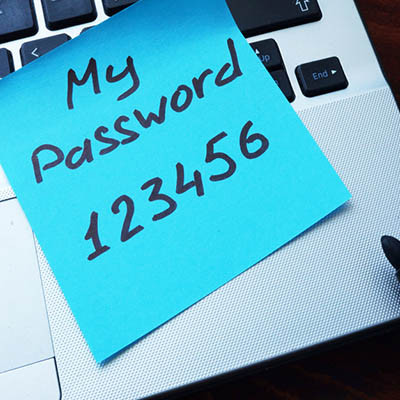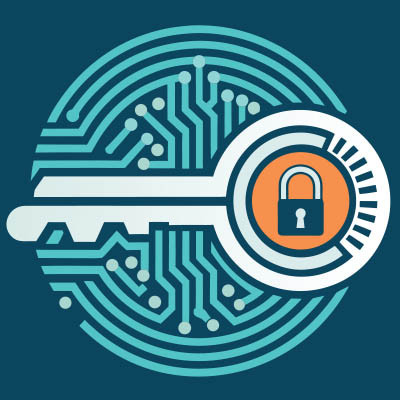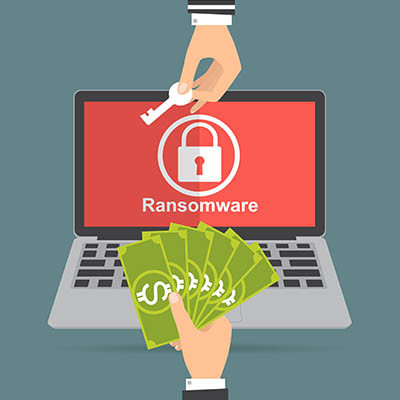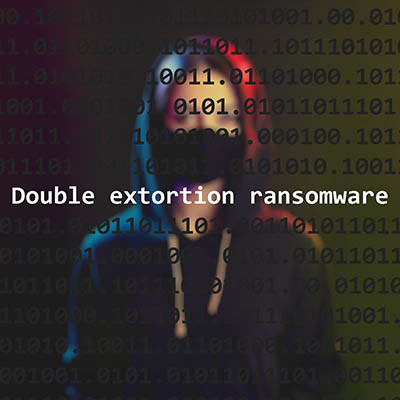While you’re busy shoring up your cybersecurity measures, it’s worth asking what you’re doing about physical security breaches. Considering the risk they pose to your employees, data, and equipment, you shouldn’t leave this issue unaddressed for your business. Any small business owner should strive for the peace of mind that physical security can bring about.
Gravité Blog
How many employees do you have who keep your company’s passwords on sticky notes stuck to their monitors? This simple, seemingly benign trick could be putting your business at risk. After all, if you can see the password on a sticky note, so too can others who happen to be wandering around the office—including potential threat actors.
Adopting smart office technology—from connected lighting and thermostats to sophisticated monitoring sensors—can transform your workspace, offering efficiency and a modern aesthetic. Yet, as IT experts, we must guide you past the shiny facade to confront a critical reality: every new smart device is a potential gateway for cyber threats.
You should not have to sacrifice security for the sake of being "high-tech." However, implementing these solutions without a robust security strategy is a risky gamble.
Despite the immense productivity and convenience that come from using a smartphone, it’s important to remember that these devices are miniature computers in our pockets. As such, they are just as susceptible to threats as a computer or laptop. According to the National Security Agency, powering down your device is one of the most effective ways to protect your smartphone from various threats. Here’s why.
It would seem that the people responsible for the recent heist at the Louvre, which netted over $101 million in jewelry, may have used a more complicated plan than strictly necessary. According to a French publication, the famous museum has a long history of cybersecurity mistakes and faux pas… many of which, given the museum’s fame, are truly shocking.
Let’s go over what we know about the Louvre’s protections over the years, and what they suggest about the current state of things. We’ll probably learn a thing or two by doing so.
An old fable says that a frog placed in a pot of boiling water will jump out immediately, but if the water is warmed to boiling with the frog already in it, the frog won’t notice until it is already too late. Many businesses today act like that frog, overlooking minor tech issues that signal a growing problem until the damage is done.
Let’s see if we can identify some of these issues to help keep you out of hot water.
Happy Halloween! Tonight, ghosties and goblins will roam from door to door, collecting candies along the way. This is to be expected. Less expected are the cyberthreats and attacks that darken the doors of modern businesses of all shapes and sizes.
Let’s talk about the things you need to do to keep your business safe, inside and out, every night of the year.
It’s easy for employees to reuse passwords just to make things easier for themselves; after all, why use different passwords when you have a dozen accounts to remember passwords for? Unfortunately, this habit will come back to bite you, especially if your business is ever involved in a data breach. These credentials could be put up for sale on the dark web… and that’s just the beginning of your problems.
Let’s say that a small business, maybe even one of your neighbors, just poured thousands of dollars into the latest and greatest security software and firewall system. You’re impressed… until a disgruntled employee walks in one night, nothing to stop them, and takes a hammer to the server they have behind an unlocked door.
Suddenly, there’s one less small business, and there was nothing that expensive security software could do about it.
While still critical to get right, passwords aren’t nearly as secure as you would expect them to be. They can be guessed (especially if proper password practices haven’t been followed), stolen in data breaches, or phished from a well-meaning—albeit shortsighted—employee.
Passwords are basically the lock built into the front door of a building. They’re enough to keep out honest people, but what about the people who are willing to go to the deep web and 3D print the master key to the type of lock you use?
Did you know that during World War II, Allied codebreakers didn't just crack the German Enigma code with pure math? They also used clever tricks, like baiting the Germans into sending predictable messages, to expose the machine's inner workings. History proves this approach worked then, and (unfortunately) continues to work now.
This art of manipulating a system to reveal its secrets has found a new, high-tech home in the world of artificial intelligence. It's called prompt hacking, and it's essentially a form of digital social engineering aimed directly at the AI models businesses are starting to rely on.
It's a familiar challenge for businesses: how do you build customer loyalty and a strong user experience while also making sure that their data is protected? Sustainable success depends on mastering this delicate balance. Instead of choosing one over the other, the goal is to optimize data protection without hindering your ability to engage customers and drive growth.
Here’s a challenge; go to any cybersecurity news website and see how far you can go before seeing an article about some new type of ransomware attack. It’s everywhere, and it’s scary, but that doesn’t mean your business has to cower in fear. With the right tools and resources at your disposal, you too can fight back against ransomware. Here’s how you can protect your business from ransomware and the threats it poses.
All businesses need a little IT assistance from time to time, whether it’s for a simple hiccup some software or a full-blown technology emergency. Cybercriminals will often pose as IT support in attempts to capture this low-hanging fruit. Your employees should know how to spot the following warning signs from a fraudulent tech support squad.
A successful business is a secure business. You probably have a good lock on the front door, maybe an alarm system, and secure cabinets for important documents. You do all of this to protect your business' physical assets from threats. So why wouldn't you do the same for your digital assets?
Just as you have physical security measures, your business also needs strong cybersecurity policies. They help create clear rules for employees to follow and a plan to fall back on if an incident occurs.
Tips are great as long as they actually work. Business owners need more technology tips than just about anything else, whether that is app-specific or general care of technology. We try to do our best to provide useful tips a couple of times a month, but this week we wanted to focus on what is probably the most important tip we can provide.
Cyberscams can be incredibly well-crafted and dangerous, and a significant portion of this danger stems from the scammer's ability to effectively utilize the psychological triggers that we all possess to some degree. Modern security training tends to focus on what signs we all need to keep an eye out for—and for good reason—but it does little to explore why modern scams are as effective as they are.
Let’s fix that by taking a moment to examine the tricks the scammers play so you can be that much more prepared to stop them by understanding how they work.
Ransomware has emerged as one of the most dangerous modern threats to businesses, and when you consider just what’s at stake with a ransomware infection, you’ll realize we’re not exaggerating. The worst variants of ransomware will attempt to extort you through any means necessary, and when you don’t give in so easily, they’ll pull out the big guns: double and triple extortion.




















